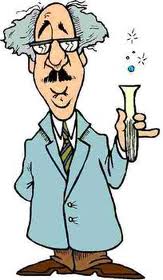In order for Science to arrive at correct vitamin theories, it cannot operate under faulty or incomplete vitamin and health premises. When you understand the current flaws in vitamin concepts, everything else like results from controversial research fits together like nature intended. These are some major physiological flaws: 
- The Body has an Anti-Oxidant Load Balance Point
The body operates by maintaining harmony and balance in all functions and processes. If more free radicals are generated, such as during exercise, natural body produced anti-oxidants are also generated, or made more efficient, or kept from being destroyed as quickly, to keep these two opposites in balance. When illness causing viruses attack the body, the immune system reacts by having White Blood cells generate free radicals that function to destroy viruses. As long as the anti-oxidant load is in balance, the viruses are destroyed in a timely manner. But if anti-oxidants are consumed at overload amounts, the WBC generated radicals could be destroyed before they have completed killing the attacking viruses and or bacteria. ref
NOTE: Analyzing the anti-oxidant amounts in some wellness supplements, it becomes obvious that the formulators of these products lacked this basic knowledge of how the body protects itself and destroys cold viruses. Not only does the body use free radicals to attack and kill viruses, it also uses the free radical ROS to help destroy cancer cells. An ingredient in fruits and vegetables called apigenin generates ROS in cells to increase this destructive pathway. Apigenin belongs to the flavonoid group in fruits and vegetables which also includes myricetin, quercetin, kaempferol, and luteolin, etc. Very important cancer prevention > ref
Certain supplements like selenium naturally increase the body's anti-oxidant load. If one is low in selenium and thus also potentially low in one of the important cellular anti-oxidants, glutathione peroxidase (GP) built from selenium, the increased supplemental selenium helps to balance. BUT, if the body is already supplied with the proper amount of selenium, adding extra pushes the anti-oxidant GP production out of balance. This can have an adverse effect on body health and can exhibit a negative influence on the results of vitamin research.
In the SELECT study testing vitamin E and selenium on Prostate Cancer prevention, the opposite of the expected result was observed. Vitamin E group had slightly more prostate cancer while the selenium group exhibited a slightly higher diabetes rate. Yes, both of these observations are related to the anti-oxidant / redox balance. ref ref
Extra selenium must have increased GP levels in some of the test group up to an amount where the anti-oxidant load exceeded the balance point for control of certain free radicals. The body uses these free radicals to switch on glucose insulin uptake by cells. The increased anti-oxidant load simply destroyed the needed free radicals before they could activate the switch for glucose insulin uptake.
The vitamin E group was only given the alpha tocopherol part of vitamin E, which is very effective against oxygen radicals that attack the prostate. But nitrous radicals also attack prostate tissues. These need another family member of vitamin E to destroy them, gamma tocopherol. In fact, there may be more nitrous than oxygen radicals generated in the prostate. Taking just alpha tocopherol actually hinders the absorption of gamma from food and lowers the amount of this nitrous radical destroying form in the blood. This leaves more than half the prostate tissue unprotected. Studies after the SELECT research ended early have found positive results using both vitamin E forms together.
- Nutritional Science operates as if all vitamin forms are interchangeable
Natural with synthetic? Some synthetic versions of natural vitamins are not identical and do not have the same function or process activity levels, especially the fat soluble vitamins A, D, E & K. If a synthetic version is used in a study, the protocol of the Scientific Method dictates that the results must specify this information in the result statement. But far too often, the Scientific Community generalizes results to imply both the natural and synthetic forms because they do not officially recognize any vitamin form differences or family symbiotic relationships. Science has now proven without question that these differences exist. Some Scientists and Nutritionists must still be operating under the past faulty assumptions.
OF INTEREST: It is puzzling to note that when synthetic vitamin E was first synthesized and tested against the natural, scientists observed a significant difference. They had to use about 40% more synthetic material than the amount of natural vitamin E form to match the activity being measured. So 1.33 mg of synthetic vitamin E became equal to 1 mg. of natural. Dogs were used in those tests. Recently in human studies, Scientists measuring vitamin E tissue levels rather than just blood levels have discovered that the real equal amount for synthetic E is about double the amount of the natural. Does this mean the 1941 tests were not really correct and a faulty theory has served as the basis for nutritional applications for over 70 years? ...Yes, it appears so!